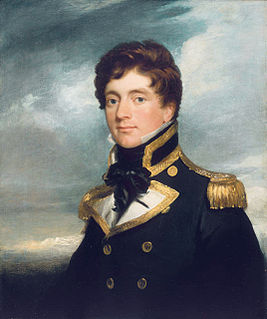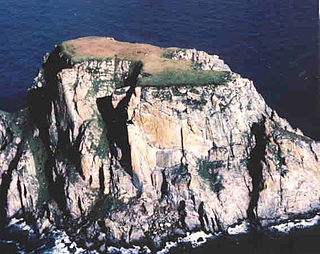| Geography | |
|---|---|
| Coordinates | 70°53′18″N158°42′27″W / 70.88833°N 158.70750°W |
| Length | 5 km (3.1 mi) |
| Highest elevation | 2 m (7 ft) |
| Administration | |
United States | |
| State | Alaska |
The Seahorse Islands is a chain of long and narrow sandy islands in western North Slope Borough, Alaska, United States. They are located between Peard Bay and the Chukchi Sea, 1.7 km (1.1 mi) east of Point Franklin. The longest island is about 5 km (3.1 mi) in length and the highest point of the islands is 2 m (6.6 ft). The shape of these coastal islands has changed over the years.

North Slope Borough, established in 1972, is an Alaskan borough bounded on the south by the Brooks Range and located largely in the North Slope region of the U.S. state of Alaska. It is the northernmost formal community on the North American continent. As of the 2010 census, the population was 9,430. The borough seat is Utqiagvik. The mayor is Harry K. Brower, Jr., first elected in a special election in July 2016 after recall of the previous mayor by an April 2016 election.

Alaska is a U.S. state in the northwest extremity of North America, just across the Bering Strait from Asia. The Canadian province of British Columbia and territory of Yukon border the state to the east, its most extreme western part is Attu Island, and it has a maritime border with Russia to the west across the Bering Strait. To the north are the Chukchi and Beaufort seas—southern parts of the Arctic Ocean. The Pacific Ocean lies to the south and southwest. It is the largest state in the United States by area and the seventh largest subnational division in the world. In addition, it is the 3rd least populous and the most sparsely populated of the 50 United States; nevertheless, it is by far the most populous territory located mostly north of the 60th parallel in North America: its population—estimated at 738,432 by the United States Census Bureau in 2015— is more than quadruple the combined populations of Northern Canada and Greenland. Approximately half of Alaska's residents live within the Anchorage metropolitan area. Alaska's economy is dominated by the fishing, natural gas, and oil industries, resources which it has in abundance. Military bases and tourism are also a significant part of the economy.

The United States of America (USA), commonly known as the United States or America, is a country composed of 50 states, a federal district, five major self-governing territories, and various possessions. At 3.8 million square miles, the United States is the world's third or fourth largest country by total area and is slightly smaller than the entire continent of Europe's 3.9 million square miles. With a population of over 327 million people, the U.S. is the third most populous country. The capital is Washington, D.C., and the largest city by population is New York City. Forty-eight states and the capital's federal district are contiguous in North America between Canada and Mexico. The State of Alaska is in the northwest corner of North America, bordered by Canada to the east and across the Bering Strait from Russia to the west. The State of Hawaii is an archipelago in the mid-Pacific Ocean. The U.S. territories are scattered about the Pacific Ocean and the Caribbean Sea, stretching across nine official time zones. The extremely diverse geography, climate, and wildlife of the United States make it one of the world's 17 megadiverse countries.
Contents
The Seahorse Islands were named by Captain Frederick William Beechey in 1826. Beechey had sent out his barge to explore the coastline further north. It reached the islands on August 21, 1826. Beechey, writing later, said: "On the 21st they arrived off a chain of sandy islands... which I have distinguished by the name of the Sea Horse Islands." [1] "Sea Horse" is an antiquated term for the walrus.

Frederick William Beechey was an English naval officer and geographer.

The walrus is a large flippered marine mammal with a discontinuous distribution about the North Pole in the Arctic Ocean and subarctic seas of the Northern Hemisphere. The walrus is the only living species in the family Odobenidae and genus Odobenus. This species is subdivided into three subspecies: the Atlantic walrus which lives in the Atlantic Ocean, the Pacific walrus which lives in the Pacific Ocean, and O. r. laptevi, which lives in the Laptev Sea of the Arctic Ocean.
Coordinates: 70°53′18″N158°42′27″W / 70.88833°N 158.70750°W

A geographic coordinate system is a coordinate system that enables every location on Earth to be specified by a set of numbers, letters or symbols. The coordinates are often chosen such that one of the numbers represents a vertical position and two or three of the numbers represent a horizontal position; alternatively, a geographic position may be expressed in a combined three-dimensional Cartesian vector. A common choice of coordinates is latitude, longitude and elevation. To specify a location on a plane requires a map projection.





